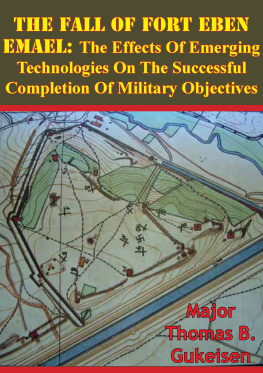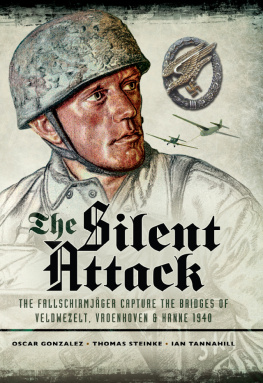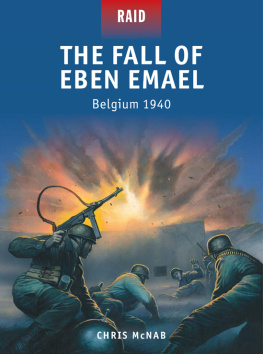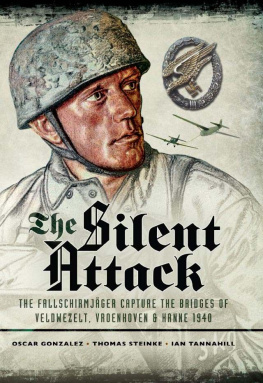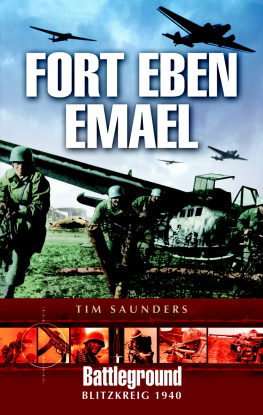This edition is published by PICKLE PARTNERS PUBLISHINGwww.picklepartnerspublishing.com
To join our mailing list for new titles or for issues with our books picklepublishing@gmail.com
Or on Facebook
Text originally published in 2004 under the same title.
Pickle Partners Publishing 2014, all rights reserved. No part of this publication may be reproduced, stored in a retrieval system or transmitted by any means, electrical, mechanical or otherwise without the written permission of the copyright holder.
Publishers Note
Although in most cases we have retained the Authors original spelling and grammar to authentically reproduce the work of the Author and the original intent of such material, some additional notes and clarifications have been added for the modern readers benefit.
We have also made every effort to include all maps and illustrations of the original edition the limitations of formatting do not allow of including larger maps, we will upload as many of these maps as possible.
THE FALL OF FORT EBEN EMAEL: THE EFFECTS OF EMERGING TECHNOLOGIES ON THE SUCCESSFUL COMPLETION OF MILITARY OBJECTIVES
By
MAJ Thomas B. Gukeisen
TABLE OF CONTENTS
Contents
ABSTRACT
This study details the events of 10 May 1940 at Fort Eben Emael, Belgium, and the elements which led to the successful seizure of the fort by the German military. The central focus of this thesis is the following question: Was the use of emerging technologies the key to victory at Fort Eben Emael? First, the study focuses on the technologies themselves. Secondly, this study examines the leadership and training of the German unit assigned the mission at Fort Eben Emael. Lastly, this study examines administration and personnel issues that existed for the Belgians stationed at Fort Eben Emael. This study determined that the glider did afford troops the advantage of surprise; however, the hollow charge failed to live up to its reputation as it was most effective when used in such a way that it was no different than a conventional charge. Further, the German units training and leadership was exemplary and contributed more to the missions success than the technologies the unit employed. Additionally, Fort Eben Emael was faced with serious internal issues that prevented a successful defence of the fort. Therefore, this thesis concludes that emerging technologies were not the most crucial component contributing to mission success.
ACKNOWLEDGEMENTS
I would like to thank my wife Kate for enduring the countless hours devoted tom completing this thesis and reviewing the many drafts before it was just right for them committee. Second, I owe thanks to my committee, John Reichley, Dr. Richard Barbuto, and LTC John Suprin, for guiding me down the path and subsequently keeping me on azimuth. This thesis could not have been completed without the help of Mr. Fievez; thank you for taking the time for showing me the fort, answering the countless questions, and providing me with necessary information not readily available. To Major General Kenneth Bowra for mentoring, advising, and allowing me the freedom to pursue the events surrounding Fort Eben Emael. One cannot fail to mention Ms. Helen Davis for assisting in the formatting and polishing to academic standards. Lastly, to all the veterans of Fort Eben Emael, thank you for leaving a tradition of honour and dignity and for setting the highest standards for future generations of soldiers to aspire to.
CHAPTER 1 INTRODUCTION
In the 1930s Europe was troubled with economic depressions that led to the rise of nationalistic powers that became increasingly revolutionary and aggressive in nature. Belgium, knowing what happened in the Great War and four years of enemy occupation, took certain measures to strengthen its defences. Parliament passed a plan for restoring, modernizing, and constructing fortifications and in 1932 the construction of Fort Eben Emael began. Politically, Belgium entered into many agreements in hopes of handling future conflicts in the region. Experience had taught Belgium that, in spite of declarations, promises, and agreements, she would be in great danger in the event of European conflict. On 3 September 1939, France and Britain declared war on Germany for invading Poland.
By Belgium declaring neutrality in 1936, she could not form a joint defensive policy with France and Britain. General Maurice Gamelin, Chief of the General Staff of National Defence for France, developed Plan D in 1939 to counter a repeat of the German 1914 Schlieffen Plan. Given the solid bastion of the Maginot Line, Plan D focused on countering a German attack through Frances northern flank.
General Gamelin was a veteran of World War I and therefore had been impressed by the rewards of a defensive approach. Plan D called for a defence along the Dyle Line (so named for the Dyle River which runs from Antwerp to Namur). The river, coupled with French planners hopes of the Belgian border fortifications holding for five days, would allow French and British forces to assemble east of the Dyle Line and stop a German advance.
The most modern and strongest of the Belgian forts at the time, Fort Eben Emael was considered, by many, impossible to capture. Named for the nearby villages of Eben and Emael, the fort was constructed from 1932 to 1935 on a granite ridge overlooking the Meuse River and Albert Canal. Eben Emael was one of the twelve forts around Lige that dominated eastern Belgium, and its primary mission was defending the bridges over the river Meuse and the Albert Canal. This fortress posed a barrier for any invading force and could only be attacked, with any degree of success, by a specially designed and equipped force.
German Military Development (Interwar Period)
During the interwar period, German doctrine made a radical shift away from static attrition based warfare. Strategy had to link military campaigns to goals and means. Individual battles at multiple fronts had to be integrated into an operational design that added movement to the direction of the overarching strategy. The German military went through a dramatic strategic modernization plan that is best described as an institutional triangle. The plan made a strong impact on the public, on the attitudes of workers, and on technocratic rule. Military work and politics became inseparable. In parallel to physical modernization the German staff system opened to debate and innovation. This radical thinking opened the chain of command with its emphasis on decision making at the front battle zone line and optimal use of weapons shaped command and deployment.
The substitution of machines for men forced the adaptation of the army to the new German war machine. Operational planning and strategy became a matter of management of arms. It is this system that made the German military the most radical exponents of machine culture in the military. This formation of a military machine strategic culture linked the military organization and operation to industry and popular mobilization, gave unprecedented freedom and independence to lower echelon front officers, and linked morale to popular sentiment.
The Army High Command OKH (Oberkommando des Heeres) began a radical triad of military reform in support of this new form of warfare. First, the force was restructured beginning with infantry squads that consisted of nine men and one non-commissioned officer with an MG 34 machine gun. Panzer divisions were teamed with light infantry forces to form the backbone of mechanized units. The OKH also recognized the importance of training the force, but unlike previously, the major purpose was to develop mid-level and junior officers and non-commissioned officers. The training emphasized decentralization and initiation through auftragstaktik, or mission oriented tactics. Lastly, the OKH published numerous field service regulations that were validated through extensive training exercises. These regulations recognized the importance of a combined arms attack and emphasized manoeuvre over fire. Reserve forces were used to reinforce success and exploit gains before the enemy could react.

